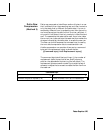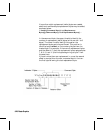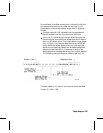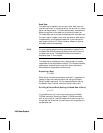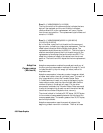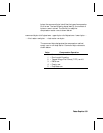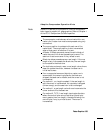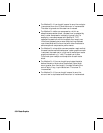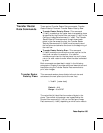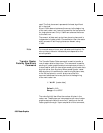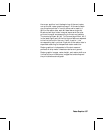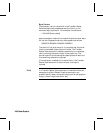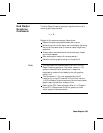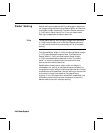
Adaptive Compression Operation Hints
Note Some HP LaserJet printers perform internal compression
techniques to support full-page graphics. Refer to Chapter 1
of the PCL 5 Comparison Guide for specifics.
The compression methods cannot be mixed within one
raster row. A raster row must be compressed using only
one method.
The cursor position is updated with each row of the
raster block. The cursor position is also incremented
when a block count of less than 3 is sent.
A Raster Y-Offset command moves the entire block of
raster data and initializes the seed row to zeros. The
seed row is set to zero even if the y-offset is zero.
Block size takes precedence over row length. If the row
length of any line exceeds the block size, the row length
is truncated to the block size.
For duplicate and empty rows, a row length value of zero
does not update the cursor, however the seed row is
initialized to zero.
If an unsupported command byte for a raster row is
encountered, the remaining bytes for the block are
skipped, the seed row is cleared, and the cursor is not
incremented.
For method 1, run length encoded, if the row length is
odd, the cursor is incremented, the row data is skipped
(thrown away), and the seed row is left unchanged.
For method 1, a row length value of zero increments the
cursor and zero fills the seed row.
For method 2, TIFF, if row length terminates the data
before the control byte value is satisfied (literal byte
count greater than row length), the data following the
control byte, if any, is printed as text. The cursor is
incremented.
Raster Graphics 6-33Raster Graphics 6-33



